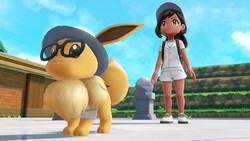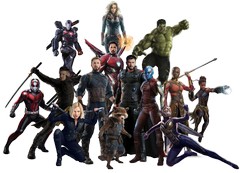 Let’s GO back to where it all started. The Kanto region is the place where the Pokémon series began back in 1996 with Pokémon Red and Pokémon Blue on the Gameboy.
Let’s GO back to where it all started. The Kanto region is the place where the Pokémon series began back in 1996 with Pokémon Red and Pokémon Blue on the Gameboy.
However, I first caught onto the phenomena back in 2004 when I played Pokémon Firered and Pokémon Leafgreen on the Gameboy Advance.
Now, in 2018, Nintendo has brought the original journey we all loved back to the Nintendo Switch and it’s definitely something worth catching.
The release of Pokémon Let’s GO Pikachu and Pokémon Let’s GO Eevee finally brings the series to the Nintendo Switch and is a soft remake.
It has all the spots experienced players remember like Pallet Town, Pewter City, Cerulean City, Saffron City, and others.
Nintendo even brought back the original 150 Pokémon along with their Gym Leaders.
On the Switch, the Kanto area of the map looks gorgeous because you can see every strand of grass in the ground and ray beaming from the sun in the sky.
In this latest version of Pokémon, you notice every little detail because this is the first one to be released on a home console in high definition.
Another great feature is the battle sequences. There are new actions the Pokémon can take against each other, and being able to see wild Pokémon coming instead of the game getting interrupted when you don’t expect it is a great adjustment.
Getting Pokémon you can use to fight like Bulbasaur, Charmander, and Squirtle, was the original difficult choice to make in the older versions, but it’s one of the most exciting parts of this title.
When you catch a Pokémon, they can follow you around or you could ride the bigger ones. This demonstrates the relationship between trainer and Pokémon greater than ever before.
The catching system is based off of the mega popular mobile game Pokémon GO. I was unsure how to feel about this mechanic being incorporated, but after playing for a while it’s actually very fun with the Joy-Con controller.
This different gameplay makes the game feel similar enough to the original titles, yet completely new.
While these features are great, it’s level of difficulty is very much lower than the original versions.
Puzzles are simplified, trainers are easier to avoid, and some of the gyms have prerequisites to meet before you’re able to challenge them.
On the other side of the Poké Ball, you could say this lower level of difficulty makes the game more appealing to people who are new to the experience.
For the experienced, it’s a fun trip down memory lane that feels different enough to warrant its existence.
PHOTO COURTESY of Kotaku



